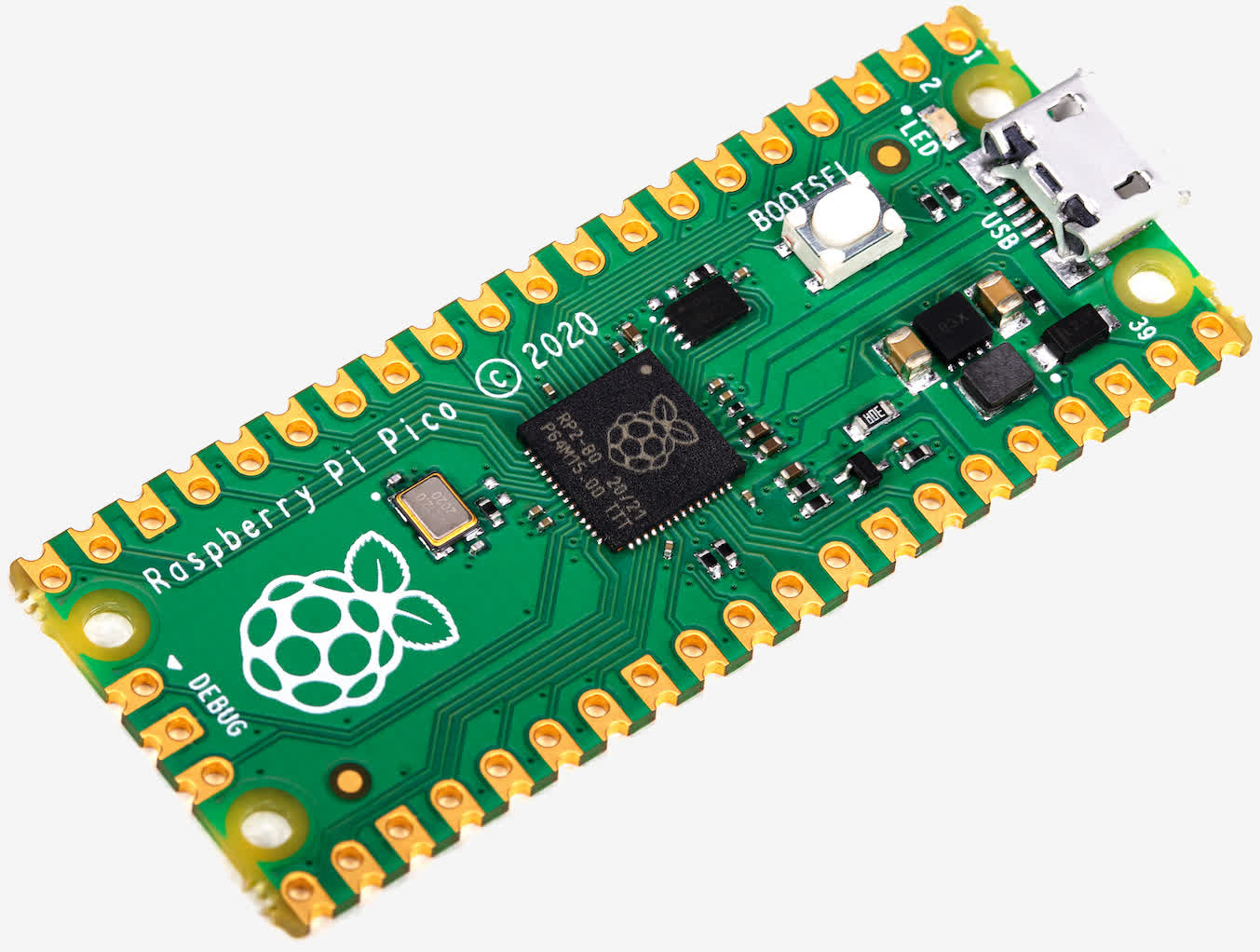Raspberry Pi's Pico microcontroller is just $4
In a nutshell: The Raspberry Pi Pico utilizes a flake developed in house called the RP2040. Co-ordinate to hardware lead James Adams, they had three key goals when designing the flake: information technology had to showroom impressive functioning, take a flexible I/O for compatibility purposes and be cost efficient. Building on lessons learned from using other microcontrollers in their products, Raspberry seemingly accomplished its goals,
The Raspberry Pi foundation on Thursday appear its first microcontroller-course product.
The RP2040 package consists of the following:
- Dual-core Arm Cortex-M0+ @ 133MHz
- 264KB of on-fleck RAM
- Support for up to 16MB of off-fleck flash memory via defended QSPI bus
- DMA controller
- Interpolator and integer divider peripherals
- 30 GPIO pins, 4 of which tin exist used as analogue inputs
- 2 × UARTs, 2 × SPI controllers, and two × I2C controllers
- 16 × PWM channels
- one × USB 1.1 controller and PHY, with host and device support
- 8 × Raspberry Pi Programmable I/O (PIO) state machines
- USB mass-storage boot way with UF2 support, for drag-and-drop programming
As for the Raspberry Pi Pico itself, it pairs the RP2040 with 2MB of flash memory and a ability supply scrap supporting input voltages ranging from 1.8v to 5.5v. There's also a single button push button that tin exist used as a general input and 26 of the thirty GPIO pins are exposed.

Like other Raspberry Pi devices, the Pico is affordable. Very affordable. You lot'll pay just $4 if purchased individually, or if you opt for the latest re-create of HackSpace magazine, yous'll go 1 bundled for gratis. They're bachelor to social club as of writing from 1 of Raspberry Pi'due south many approved resellers.
Source: https://www.techspot.com/news/88361-raspberry-pi-foundation-launches-4-microcontroller-featuring-custom.html
Posted by: fishervered1989.blogspot.com


0 Response to "Raspberry Pi's Pico microcontroller is just $4"
Post a Comment